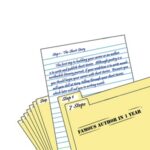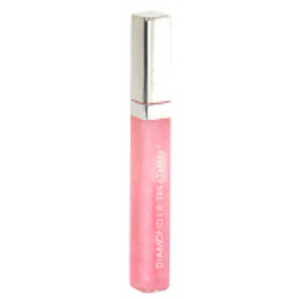If you are planning to start a publishing company, than you are most likely doing it with one of two goals in mind:
1.) You want to be a small press publisher who accepts submissions from others.
2.) You want to be a publisher who self publishes.
Doing both is not recommended, as being a small press publisher is a full time job that will not allow you the time to write and publish any books of your own. Whereas being a self-published publisher is also a full time job that will not allow you the time to focus on publishing books for other people. So your first step is to decide wither you are starting your company to publish books for you and your family or are you going to put out a call for submissions from strangers? I know that you can not do both, because when I first started, I tried to do both, and found that in the end doing both meant having no time for either. I was forced to make a decision, and in the end I realized that my goal was to publish my own books, so I closed out the call for submissions and stopped accepting work from writers, so that I could focus full time on self-publishing my own books instead.
I started my own publishing company and the best advice I can give to someone seeking to do the same is this:
1.) Be sure that you really have a passion for books.
2.) Know that running a publishing company is a full time job and once you start, you may need to quit your day job just to have enough time to focus on your publishing company.
3.) Know that for the first four or five years, you will be living off your savings, because it will take at least that long before your publishing company starts bringing in a profit.
4.) Most importantly, know that running a publishing company is work. A lot of hard work. Work that will drive you mad if you do not have the stamina to deal with a lot of hard work.
5.) Best advice of all: Do not start your own publishing company unless you have the will power to keep it running for the next 20 or 30 years. There are way to many fly by night publishers out there, you do not need to add to that list.
Okay. Moving on to actually getting started. How do you do it? Well, getting started is the easy part. Anybody can start a publishing company; there is nothing to it really. The hard part is keeping it running after you have gotten started.
The ten steps below can be used for both starting a Small Press Publishing House and starting a Self-Publishing Press, however, they are writing with the intention of starting a self-publishing press, and will need slight revisions to work for the small press publisher.
The Ten Steps to Starting a Publishing House:
Step one: HAVE A BUSINESS PLAN
The most important part of starting any business be it a restaurant or a craft shop or a publishing house, is to have a business plan. If you do not have a plan, than you could easily get side tracked from your original goals and lose your focus. So step one is to sit down and write up a business plan. This is easy enough to do.
Business plans will vary, but most will include a list of the goals you want for your business: immediate goals, weekly goals, monthly goals, yearly goals, and at least one goal that says where you plan to be 5 years down the road. Once you have decided on your goals, next you need to make a plan as to how you should try to reach those goals.
Some businesses have a short five or ten page business plan; others may write up 30 or 40 pages, some may just have a one-page list. The length of your business plan is not important. What is important is that you have a plan that tells you where you want to go and how you will get there.
Step two: KNOW YOUR CUSTOMER
This step is all too often over looked by new business start ups and can quickly result in your down fall if neglected. First off, know that you cannot please everyone, you cannot sell to everyone, and not everyone is going to like you or your product. What you have to do is decide who your ideal customer is. Let’s look at three big names in the fashion industry for an example: Wal-Mart, Macy’s, and Nordstrom’s
Wal-Mart focuses on the average income family of a $20,000 to $30,000 income and a family with an average of four children, who live in an apartment but saving for their own home. Their ideal customer shops on a budget and is looking for a bargain.
Macy’s focuses on the high-income family with a housewife whose husband brings in an income of $75,000. She is the mother of two teenagers or college students. Their ideal customer now has more time to spend shopping for herself than she did a few years ago so she wants to splurge.
Nordstrom’s focuses on the elite high income business couple. Both have jobs paying over $100,000, they have no children and live in a penthouse and attend high-class business-cocktail parties on a weekly basis. Their ideal customer has money to spend and wants one of a kind fashions straight from the Paris runways.
Each of these three company’s caters to a different type customer. They are successful because they focus only on that one customer. If they tried to cater to multiple customers, they would quickly fall and go bankrupt. Learn from the big companies and focus only on your ideal target customer.
In publishing, you need to do the same thing. Do your research and find out who reads the type of books you plan to sell. What is their income? How do they live? How much can they afford to spend? How much are they willing to spend?
Step three: PLAN A MARKETING CAMPAIGN
This will change over time and should be rewritten at least four times per year (quarterly). You need to plan a marketing campaign if you want to be a successful publisher. Knowing your ideal customer is not enough; you must plan how you are going to get your business out there for them to actually become your customer. Research what other publishers are doing. How do they advertise their business? What bookstores carry their books? How did they get their books in their customers reach?
Step four: CHOOSE A NAME
What is in a name? Everything! A name can make or break your business. One of the biggest mistakes a new publishing company makes is not choosing a name. Sounds silly, but it is true. Most publishing company start-ups just use their own name: John Smith Press or Jane Doe Publishing House. Ask yourself, would YOU buy a book from a publisher called John Smith Press? Go to your local bookstore and take a look at a few of the publishing house names. What do you see? Bantam Books. Scholastic Books. Twighlight Manor Press. Firebird Fantasy. Story Press. Writer’s Digest Books. You get the idea right? Sit down and really think about what image you want to present. How do you want customers to see you? Than brainstorm names until you find one that fits.
Step five: ASSIGN JOBS
If you are starting a self-publishing company, than you will be doing most of the jobs yourself. However, if you are starting a small press company, than you will need to hire staff: editor, graphic designer, font setter, layout manager, accountant, etc. Someone has to read the submissions coming in. Someone has to proofread the galleys. Someone has to edit the manuscripts. Know that one person cannot do all of these jobs, and often you will need three or four people for each of these jobs.
Step six: FIND A PRINTER
As silly as it may sound, this is a step that many publishers overlook until the last minute and than they panic when they realize their local print shop cannot handle the job. Most new publishers assume that any print shop can print up all the books they will ever need. Truth is, very few print shops are able to handle a full print run of books. Most are only accustomed to printing up 16 page brochures. You may have to have your books printed up and shipped in from two or three states away. If you plan to do hardcover picture books, you should also know that there are only about a dozen print shops in the USA that have the equipment to do so. If you live in Maine, you could find yourself having to order books from a print shop in California, and the freight shipping charges could be higher than the actual cost of printing the books. Do your research and be sure that you can find a local printer that can handle your expected print loads. The printer will be your most expensive part in starting your business. Plan on $20,000 to $40,000 to print up 3,000 to 8,000 copies of your book. Make sure you see samples of their work before you dish out that kind of money, as most print shops do not accept returns or issue refunds.
One option you might consider is to hire a POD (print on demand) printer to print your books up for you. The cost of POD is more per book, but you do not have to dish out more than a few hundred dollars at a time. While there are several out there, the only one I can honestly recommend as being a high quality reputable printer, is LuLu ( http://www.lulu.com ).
Step seven: FIND A DISTRIBUTOR
Most publishers are not equipped with the ability to hire a sale representative to travel across country to visit each of the 100,000 plus bookshops and peddle your books to them. This is where a book distributor comes in. Distributors, take sample copies of your book and head out to shops promoting your books. There are dozens of book distributors out there. Some are huge national groups, other deal only with local bookshops, some deal only with libraries, while others deal only with schools. Your job is to research each of the distributors and determine which one is best suited to promoting your line of books.
Step eight: THE ISBN
The sheer cost of the ISBN frightens many new publishers into thinking they can go ahead with out them. Not so. There is no bookstore online or local that will carry a book without an ISBN, and only a limited number of libraries will add a non-ISBN book to their collection. If you chose to go without the ISBN, know that you can than only sell your book via tailgate. Be prepared to go to local beaches, fairs, and craft shows, and sell copies of your book off your tailgate and be prepared to go out of business in your first year. No ISBN equals no sales.
Step nine: LEARN TO KNOW BOOKS
If you want to be taken seriously as a publisher, than be sure that your books LOOK professional. There is no bigger turn off to a buyer, than to open a book and see that there is no copyright page, no dedication page, no about the author page, no LCCN page, no ISBN, no table of contents, hard to read fonts, and a sloppy layout.
My advice: buy copies of today’s best sellers: Harry Potter, Stephen King, etc. and do not read the books, but instead look at the pages. How many blank pages are at the beginning and end? How are the first 13 pages set up? Did you notice that there are always at least 13 pages of information before the book even begins? What do the margins look like? What font was used? What color is the paper? Is the paper smooth or grainy? Forget about reading the story; really get to know the book itself.
Step ten: LEARN TO BE AN EDITOR
If you are going to self publish than you are going to have to learn the art of editing manuscripts. This cannot be overlooked. If you cannot take the time to do this, than you must hire an outside editor.
IN CLOSING:
While this is by no means all there is you need to know about starting your own publishing house, it will certainly help get you on the right track. It is a lot of hard work and can be quite stressful at times; but it is not a hard thing to do, if you have the patience and persistence to keep on plugging and never give up. Remember that it is a slow business to gain a footing in, and be prepared to live off of your savings for at least three years. Once you do have a firm foundation and are making a profit, remember too, that the average income of a small publisher is less than $30,000 a year. This is not a career for anyone seeking to get rich, but rather a career of love. You become a publisher for your love of books not for your love of money.
I hope that you have found this information helpful in starting your new career. Best of luck to you.







